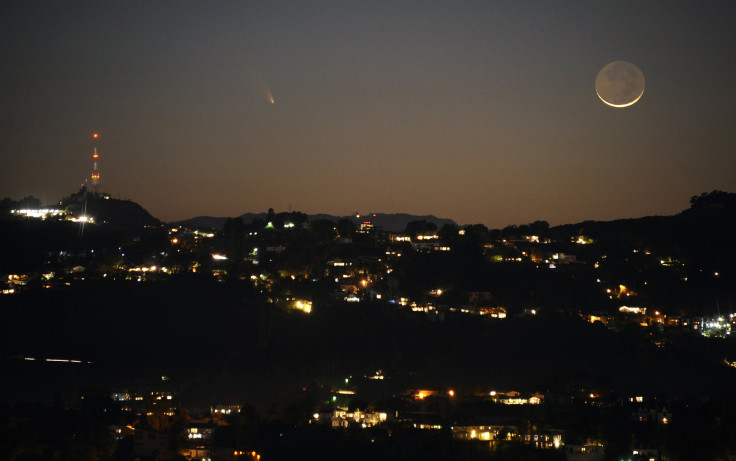Comet Lovejoy In Closest Approach To Earth: How To See C/2014 Q2

Comet Lovejoy, C/2014 Q2, makes its closest approach to Earth tonight. The comet will be at peak visibility over the next two weeks and stargazers are urged to check it out this time around. It won't be back again for 8,000 years.
To view Comet Lovejoy you'll need binoculars, or a telescope, and darkness, Sky & Telescope reported. The site has charts to help people track the comet in the night sky. It is possible to view the comet with the naked eye, but it will be quite dim. The best time to view the comet will be between twilight and moonrise, when the sky is at its darkest. On Wednesday, Lovejoy will be 44 million miles from Earth and can be found east of Orion's belt.
The comet was discovered by amateur astronomer Terry Lovejoy in August 2014 and is considered a long-period comet, which is one with an orbit longer than 200 years. It's predicted to make its next trip into the inner solar system in 8,000 years. Halley's Comet, by comparison, is a short-period comet; it passes Earth every 75-76 years.
Lovejoy first became visible in the Northern Hemisphere, with a good pair of binoculars, in December, Universe Today reported. Its brightness will increase over the next two weeks, and it will appear slightly higher in the night sky over the next few days. Lovejoy will reach perihelion, its closest approach to the sun, on Jan. 30, and then will begin to fade, Sky & Telescope reported. If you are unable to view Lovejoy, the Virtual Telescope Project will have a live stream on Jan. 11.
And there's more stargazing fun in January: Jupiter will rise in the night sky by the end of the month. NASA suggests observing the gas giant on the night of Jan. 23 as three of its moons will be visible.
© Copyright IBTimes 2024. All rights reserved.





















